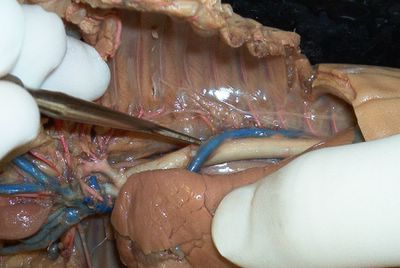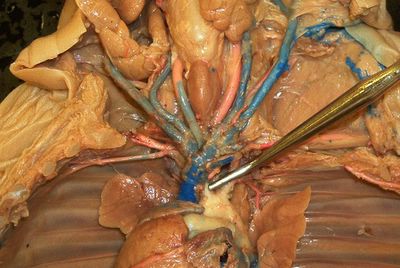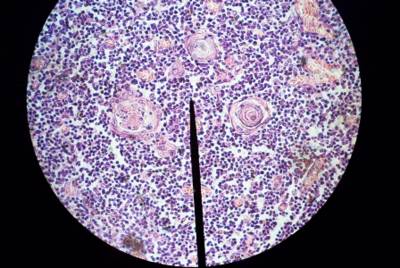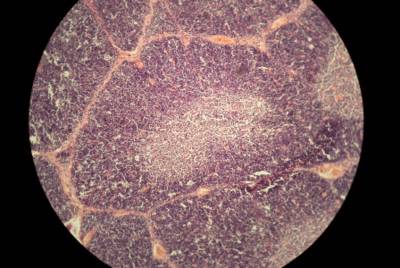Friday, January 14, 2005
Thursday, January 13, 2005
Tuesday, January 11, 2005
Thyroid gland

Thyroid gland, The blue dots here are the nucleas of each follicular (principle) cell, when you are in the lab you will notice the cell membrane around each dot which depicts its size. The parafollicular cells will be the same as these but a bit larger, and also will not come in contact with the follicle directly, but rather, will be surrounded by the smaller follicular cell. Take a look at the Endo lab to view a parafollicular cell.
Me
Thyroid gland

Thyroid Gland, Here is a good photo of this gland, #1 is showing the Follicular (principal) cells, these are located around every Follicle and are only a few cells thick being either squamous,cuboidal, or columnar shaped. The dark dots you see are the nucleas of every follicular cell. #2 is showing the Colloid, this appears to me to just some kind of "Goo" which fills the lumen, which is just the space.
Me
Monday, January 10, 2005
Shots of the Thymus Gland, well my best try anyway.
Well here we go. I spent the afternoon in the A&P lab trying to get some good photos of the cells we have been looking at this week. After many attemps I finally got it down with the help of a toilet paper tube (empty of course) some tape and alot of patients, well we can't forget the camera, and the cookies I had hidden in my pack. Mainly today I worked on the Thymus gland, and all of the points of interest everyone should know. There will be additions added to this site on a daily basis, even if it is just a message to say I was slacking and no new pics.
Thymus gland

And now for you viewing pleasure, we have a Thymic (Hassall's) Corpuscle that i found while wondering through the medulla today. Take a close look and you will see the Epithelial recticular cells that are in concentric arrangment around the corpuscle at the end of the pointer. (Thymus Gland) If you take a close look at the bottom edge of the slide, you will see where the loose packed cells of the medulla end, and the tightly packed cells of the cortex begin, the colors begin to change here.
Me
 Today I finally posted the histology slides for this section, they are all here except for the bladderwhich will be here tomarrow afternoon. The fetal pig slides are here as well, both female/male and the kidney. Dave took a look at all of them and everything is correct, but it never hurts to make sure. This is the last lab test we will take in A&P, it will be a sad day to leave it all behind but time to move on. Take it easy,Tom email: ibnspokane@comcast.net
Today I finally posted the histology slides for this section, they are all here except for the bladderwhich will be here tomarrow afternoon. The fetal pig slides are here as well, both female/male and the kidney. Dave took a look at all of them and everything is correct, but it never hurts to make sure. This is the last lab test we will take in A&P, it will be a sad day to leave it all behind but time to move on. Take it easy,Tom email: ibnspokane@comcast.net






























